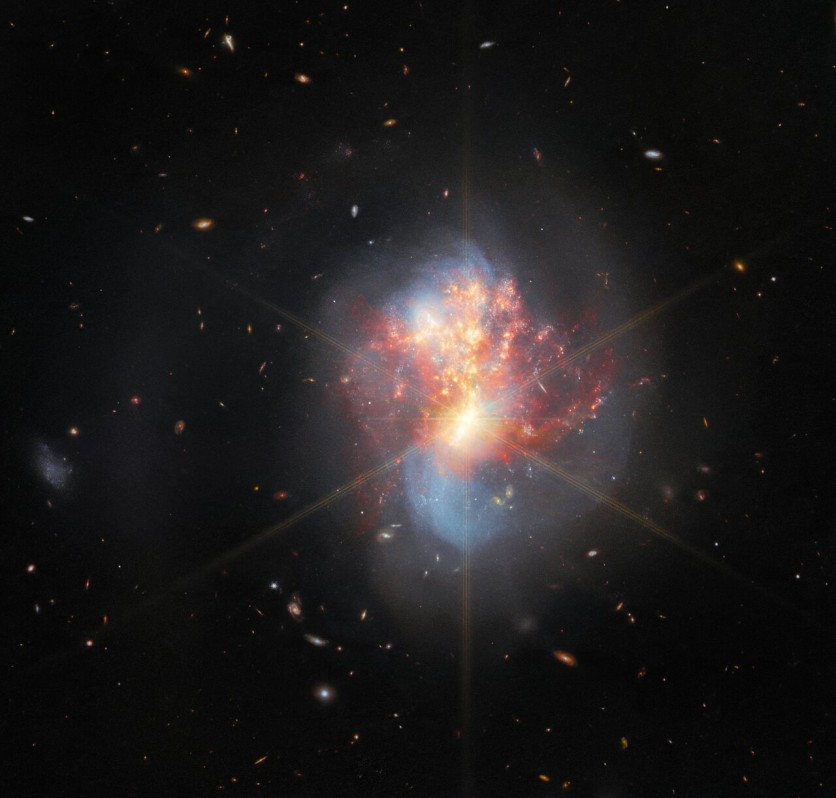NASA, ESA, and the CSA's monitoring with the James Webb Space Telescope reached a different stage as it managed to capture the clashing of two galaxies in the Cetus constellation. The pair is now called the IC 1623, and its banging heads gave birth to new stars in the process, with the space telescope bearing witness to them all.
James Webb's powerful telescopes were able to capture many astrological events in the making and gave the world different sights to see which bring them a dazzling look at the cosmos.
NASA James Webb Captures Clashing Galaxies

According to the European Space Agency's press release, the James Webb Space Telescope managed to set its sights on the Cetus constellation region which had two galaxies clashing with one another. The duo is now collectively with IC 1623, which radiated bright infrared wavelengths as they interacted with one another.
The clashing galaxies used three of Webb's most advanced cameras including the MIRI, NIRSpec, and NIRCam.
The team of astronomers who helped Webb monitor the event looked into the infrared portions of the electromagnetic spectrum which was able to capture the breathtaking site.
Read Also : [LOOK] NASA Webb Telescope Discover 'Fingerprint' Rings on WR 140 Stars-How Did it Form?
New Stars Born on IC 1623's Clash
Located 270 million light-years away from the Earth, the galaxies' clash gave birth to new stars in the process, delivering new space objects for the world to see. The study behind these clashing galaxies of the IC 1623 brought stars at an unprecedented pace, over 20 times faster than the Milky Way galaxy.
The trio of Webb's cameras captured the massive light emanating from both galaxies as they intersected each's path, resulting in its clash.
NASA James Webb's Discoveries
The NASA James Webb is a testament to many space phenomena and anomalies that took place since it first launched almost a year ago, in December 2021. Back in July, the famous space telescope released its first photos that showed the deepest image of the universe, and it brought the most detailed look from all snaps.
It is no doubt that NASA James Webb is one of the most advanced systems from the space agency's disposal, currently active in delivering its service to the world.
Apart from capturing still objects in space, James Webb is capable of keeping track of different heavenly bodies that pass by it or is detectable by its lenses. One of its missions now is to practice keeping an eye on space objects, where it first showed another of its skills by keeping track of an asteroid as its first target.
The James Webb has multiple capabilities and it delivers on many ventures for NASA and its partner organizations and agencies which have privileges in monitoring together with the world. Its recent capture of the galaxies which clashed with each other only shows that it can monitor different intergalactic events and bear witness to astronomical happenings which happen daily.
This article is owned by TechTimes
Written by Isaiah Richard
ⓒ 2025 TECHTIMES.com All rights reserved. Do not reproduce without permission.




